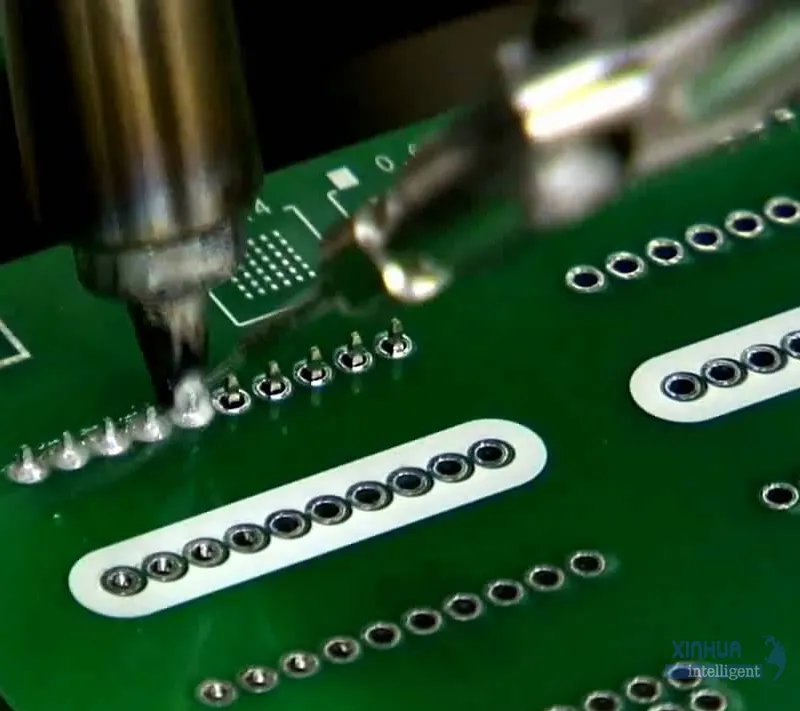
Key features and functions:
Automated Movement:
The system uses robotic arms with multiple axes (X, Y, Z, and sometimes R for rotation) to precisely position the soldering iron and solder feeding mechanism.Precise Control:
It allows for fine-tuning of soldering parameters like soldering angle, solder feed rate, solder volume, and heating time.Repeatability and Consistency:
Automatic systems ensure that each soldering point is executed with the same parameters, reducing variations and improving the quality of the soldering.Reduced Human Error:
By automating the process, the system minimizes human errors associated with manual soldering, such as inconsistent solder placement, varying solder amounts, or improper soldering techniques.Increased Efficiency:
Automatic soldering systems can significantly increase soldering speed and productivity, especially in mass production.Customizable Programs:
The system can be programmed to handle different soldering requirements for various components and board designs.How it works:
1. Component Placement:The PCB or workpiece is placed on the automatic soldering machine's worktable, typically in a fixed or pre-defined position.
2. Programmed Instructions:
The system is programmed with specific instructions for each soldering point, including coordinates, soldering parameters, and solder wire feeding details.
3. Robotic Arm Movement:
The robotic arm moves the soldering iron to the designated point based on the programmed coordinates.
4. Solder Feeding and Heating:
The system dispenses solder wire and applies heat from the soldering iron to create a strong solder joint.
5. Process Repeat:
The system repeats this process for all specified soldering points, ensuring consistent and accurate soldering.
6. Quality Control:
Some systems include built-in sensors and feedback mechanisms to monitor the soldering process and ensure quality control.
Applications:
Automatic point soldering systems are widely used in industries that require high-volume soldering, such as electronics manufacturing, automotive electronics, aerospace, and medical device manufacturing.In summary, an automatic point soldering system automates the traditional point-to-point soldering process, delivering consistent, high-quality solder joints through programmable robotic control, suited for modern electronics production demands.
